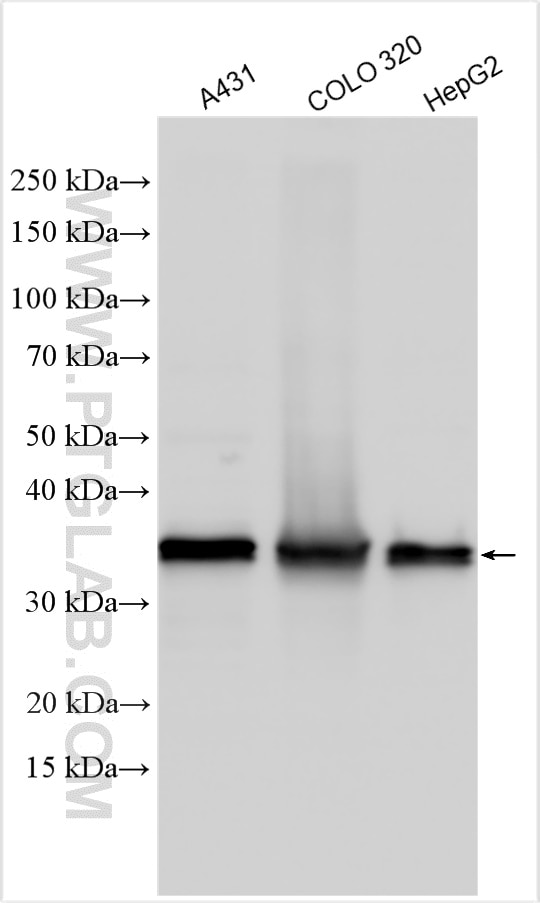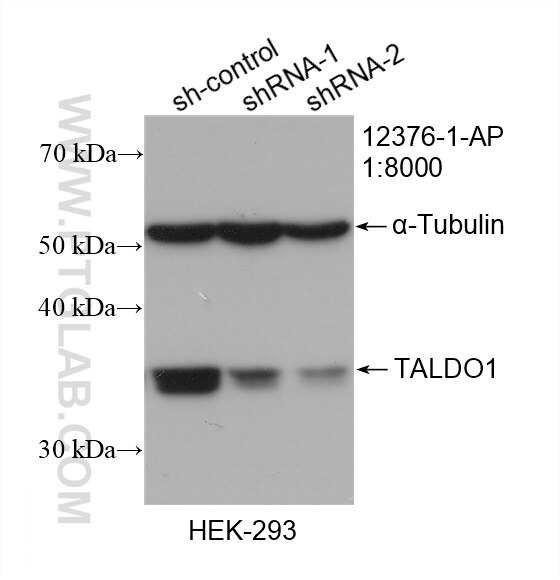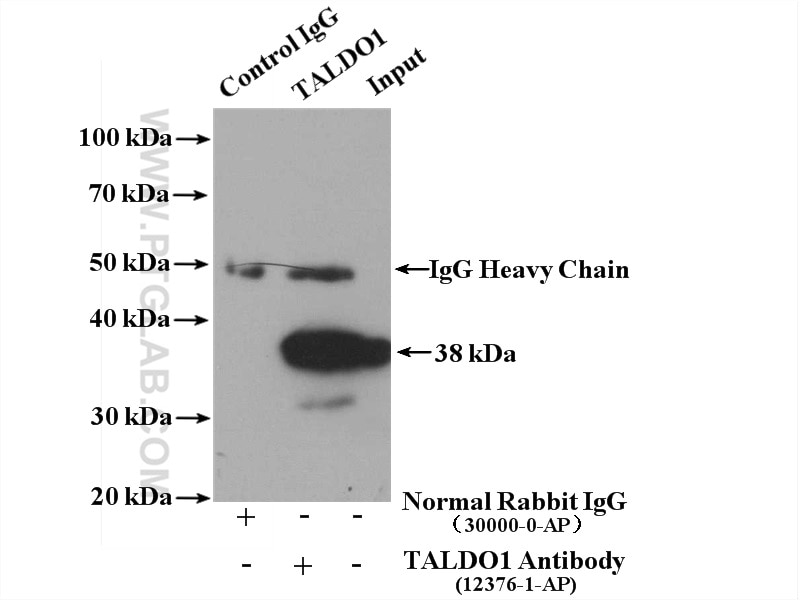- Featured Product
- KD/KO Validated
TALDO1 Polyclonal antibody
TALDO1 Polyclonal Antibody for IP, WB, ELISA
Host / Isotype
Rabbit / IgG
Reactivity
human, mouse, rat
Applications
WB, IP, ELISA
Conjugate
Unconjugated
Cat no : 12376-1-AP
Synonyms
Validation Data Gallery
Tested Applications
| Positive WB detected in | A431 cells, HEK-293 cells, COLO 320 cells, HepG2 cells |
| Positive IP detected in | COLO 320 cells |
Recommended dilution
| Application | Dilution |
|---|---|
| Western Blot (WB) | WB : 1:1000-1:4000 |
| Immunoprecipitation (IP) | IP : 0.5-4.0 ug for 1.0-3.0 mg of total protein lysate |
| It is recommended that this reagent should be titrated in each testing system to obtain optimal results. | |
| Sample-dependent, Check data in validation data gallery. | |
Published Applications
| KD/KO | See 1 publications below |
| WB | See 3 publications below |
Product Information
12376-1-AP targets TALDO1 in WB, IP, ELISA applications and shows reactivity with human, mouse, rat samples.
| Tested Reactivity | human, mouse, rat |
| Cited Reactivity | human |
| Host / Isotype | Rabbit / IgG |
| Class | Polyclonal |
| Type | Antibody |
| Immunogen | TALDO1 fusion protein Ag3031 |
| Full Name | transaldolase 1 |
| Calculated Molecular Weight | 337 aa, 38 kDa |
| Observed Molecular Weight | 38 kDa |
| GenBank Accession Number | BC009680 |
| Gene Symbol | TALDO1 |
| Gene ID (NCBI) | 6888 |
| RRID | AB_2199712 |
| Conjugate | Unconjugated |
| Form | Liquid |
| Purification Method | Antigen affinity purification |
| Storage Buffer | PBS with 0.02% sodium azide and 50% glycerol pH 7.3. |
| Storage Conditions | Store at -20°C. Stable for one year after shipment. Aliquoting is unnecessary for -20oC storage. 20ul sizes contain 0.1% BSA. |
Background Information
TALDO1 belongs to the transaldolase family which contributes to the generation of NADPH in the nonoxidative phase of the pentose phosphate pathway (PPP). Defects in TALDO1 are the cause of transaldolase 1 deficiency which results in telangiectases of the skin, hepatosplenomegaly, and enlarged clitoris.
Protocols
| Product Specific Protocols | |
|---|---|
| WB protocol for TALDO1 antibody 12376-1-AP | Download protocol |
| IP protocol for TALDO1 antibody 12376-1-AP | Download protocol |
| Standard Protocols | |
|---|---|
| Click here to view our Standard Protocols |
Publications
| Species | Application | Title |
|---|---|---|
Science mTORC1 induces purine synthesis through control of the mitochondrial tetrahydrofolate cycle. | ||
Cancer Cell Nrf2 redirects glucose and glutamine into anabolic pathways in metabolic reprogramming. | ||
Nat Commun Synthetic lethality between HER2 and transaldolase in intrinsically resistant HER2-positive breast cancers.
| ||
J Biol Chem Metabolic reprogramming driven by EZH2 inhibition depends on cell-matrix interactions |




